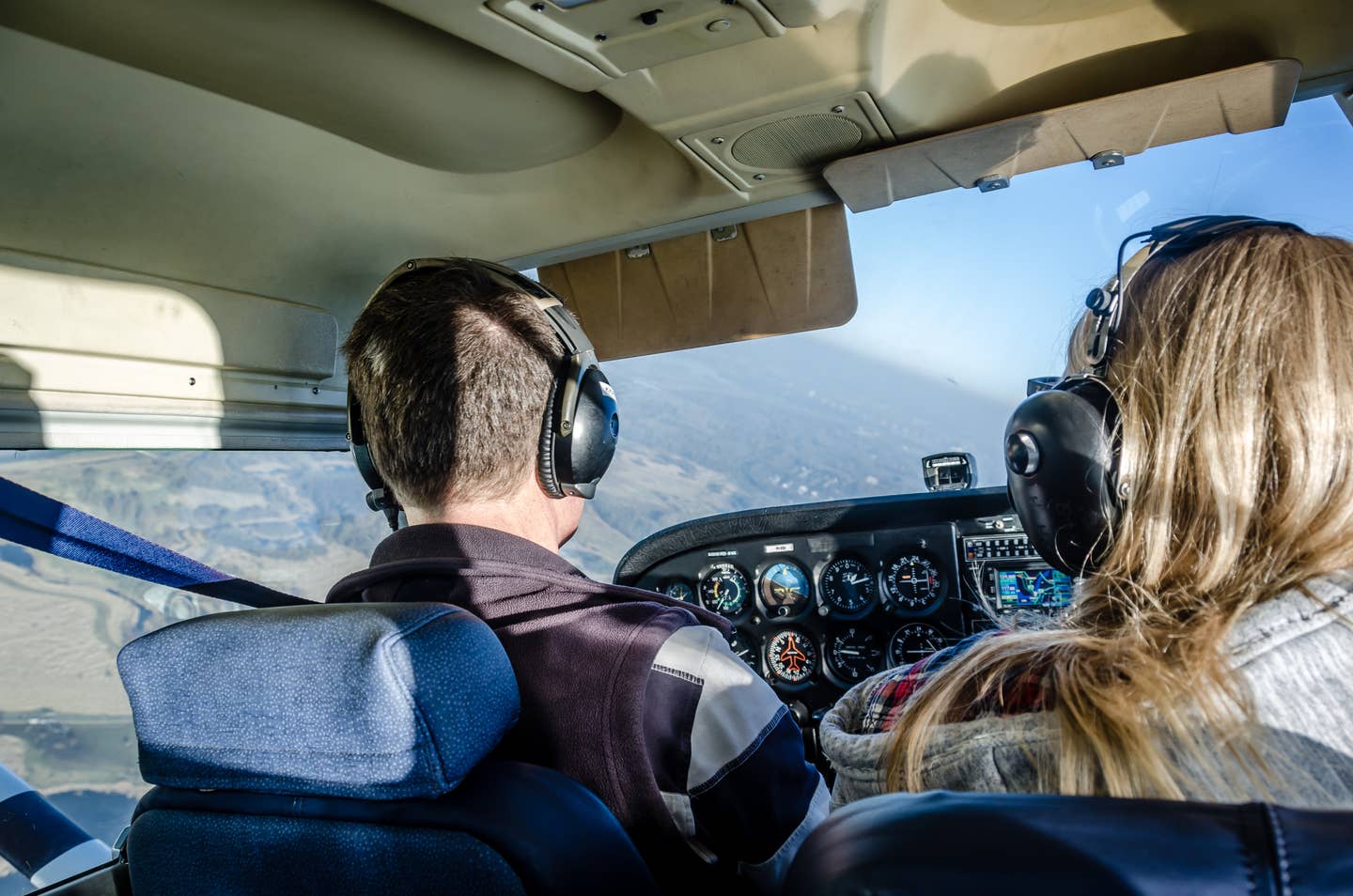Flying Precise When It Isn’t Nice
It was with some frustration that I observed my learner Ed attempting to hold a level altitude in a steep turn. He was carving a scalloped path around the horizon…

Much of the time, in light turbulence, the airplane just needs a little help from actively-participating hands and feet on the controls. [Adobe Stock image]
It was with some frustration that I observed my learner Ed attempting to hold a level altitude in a steep turn. He was carving a scalloped path around the horizon while completing his 360-degree circuit.
“Ed,” I said, “ya gotta take smaller cuts at this carving you're trying to make. Two-hundred foot deviations won't satisfy the check ride requirements.” The problem was, we were flying in continuous light, occasionally moderate, turbulence, and the airplane wouldn't stay still for more than a second or two.
With well-earned empathy, I could recall many times being in his seat, struggling to keep an airplane in bounds. I knew what he was going through, the frustration of feeling “I'm never going to get this.” Flying with precision is tough enough when you're your own worst enemy, overcontrolling in an attempt to drive the airplane down a straight path. Add in turbulent air and the frustration triples.
We know what perfect performance is supposed to look like, but we can't make it happen.
I took the controls and demonstrated how to dampen out some of the bumps, explaining as I went. “Let's just bracket the entry altitude for now, keeping it within 50 feet plus or minus. But don't focus on the altimeter reading; by the time you see a deviation happening, the airplane's already on its way to further deflection. You see, the pitch attitude is where the first change takes place, then the altimeter reading moves, and finally the rate-of-climb goes up or down.”
Precision results from making small, early corrections, not easy to do when you're bouncing like a leaf in the gale. Nevertheless, the basic theorem of flying still holds true: Power Plus Attitude Equals Performance. Set the power needed for the maneuver, place, and hold, the aircraft's attitude where it should be, and you'll stabilize on the desired result. Until, that is, unstable air upsets your applecart.
Chasing needles, or glass-panel tape presentations, won't work. Following a course deviation indicator that refuses to stay centered in rough air doesn't mean watching CDI movement and reacting; it's the heading indicator that brings the course reading into alignment, and the heading is held steady by rock-solid wings-level flight.
Okay, bouncing air takes you off your heading; put it back, using minimal bank and a brief jab of rudder. Small, constant corrections, done early, yield better results than a swinging swordfight.
Airspeed control, particularly during approach and departure phases of flight, similarly requires attitude and, in some cases, power adjustment, if the air isn't stable. Airplanes with fixed-pitch propellers are particularly vulnerable to rough-air upset; when sucked earthward by a downdraft, the pilot will naturally yank the nose up, and shove forward when boosted by an updraft. But rpm will sag and surge as a result, so both pitch and power need adjustment. Just don't forget where the neutral parameters are, when the air turns smooth, so you don't destabilize.
Much of the time, in light turbulence, the airplane just needs a little help from actively-participating hands and feet on the controls. I brace my feet on the rudder pedals to hold the nose from swinging, and if a wing goes up or down, some use of opposite rudder will help it come back to level on its own. Roll control should be reserved for big deviations.
Ed finally got the performance he wanted, by watching the horizon in his windshield and keeping it steady, in spite of the pounding from the turbulence. I used the checklist to cover up his horizon and altitude indicators, forcing him to concentrate on basic outside attitude, and he was amazed that it could be done that way. The performance instruments, I said, are tools for grading our flying.
Even when the air isn't nice.

Subscribe to Our Newsletter
Get the latest Plane & Pilot Magazine stories delivered directly to your inbox






